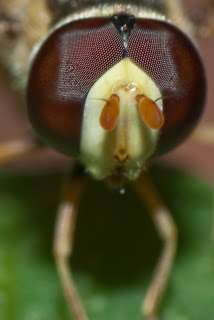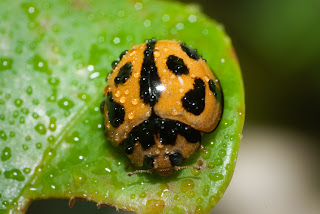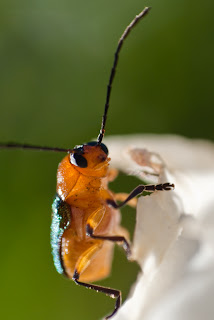This is the 6th and final post in the macro photography techniques thread. Once I get some more results with my external flash macro shots I will add flash information to the series.
Macro Photography Techniques
- Close Focus Lens
- Teleconverters
- Extension Tubes
- Reversed Lenses
- Macro Lens
- Combining Techniques
- Close Up Filters
How Do You Combine?
When I say combining techniques, I’m referring to a few options, I will give each a small write up.
Teleconverters and Reversed Lenses
This is a method I only tried very recently, it gives huge amounts of magnification, very short working distances, but very cool shots are possible. This method involves mounting a teleconverter to your body, then mounting your reversed lens to your teleconverter. You effectively double the magnification you get from the reversed lens setup. The trade offs in this case are, losing 2 stops of light (assuming a 2x teleconverter), short working distance (distance from lens to subject), tiny depth of field and extreme magnification (this makes it hard to frame handheld, as tiny movements result in big shifts in composition). I was put onto this method by this guy. Check out his flickr for some truely amazing macro photography. He combines various techniques involving off camera flash, reversed lenses, teleconverters, bellows, extension tubes and focus stacking.
Extension Tubes or Bellows and Reversed Lenses
This is a similar method to the previous. If you mount your reversed lens onto a set of extension tubes (or bellows), you will increase your magnification. The same trade offs apply as with the previous method, loss of light, shorter working distances, smaller depth of field, and larger magnification. This is not a method I have personally tried, but I know it works as I have seen the results!
Combine The Above
So what about a set of tubes or bellows, then a teleconverter, then a reversed lens? Well imagine the magnification!!!!! But the working distance might become so short, that the subject would actually have to be INSIDE the lens. This is obviously not possible, so take care you aren’t going for too much magnification.
What About A Macro Lens?
You can very easily use a macro lens in the above methods, instead of using the reversed lens. Either method (or both) will allow greater than 1:1 magnification for those super close shots.
Would You Believe It?
As I am typing out this post, a baby gecko appeared on my window sill. Naturally (with macro on the mind) I grabbed the camera off the desk, grabbed the 28mm with reverse adapter already mounted from the drawer and took his photo. I will be sure to post the shot when I am able to process it fully. As a side note, I discovered a new little trick. It will work with K mount lenses, but I’m not sure if it will work with others. On the back of the lens is a small lever, this is what the body uses to actuate the aperture for wide open focusing, stop down shooting. If you are careful about how you hold the lens, you are able to actuate this lever with a finger, to give the same effect. The gecko was sitting on a white windowsill, with a very close working distance and onboard flash at full power (it always fires full power with non “A” lenses) I needed to stop all the way down to f22.0. At f22.0 the viewfinder is basically completely black so this little trick allowed me to get the shot I wanted.
Result
Here is a shot I took using a reverse mounted 28mm lens, a 2x teleconverter, and the onboard flash. This insect was less than 10mm long, so you see the huge magnification this combination allows.
The End
Thanks for reading the final post in this series (for now). If there are other methods you would like me to cover then let me know however you can, and I’ll get onto it! And don’t forget to keep an eye out for some shots of the baby gecko.


